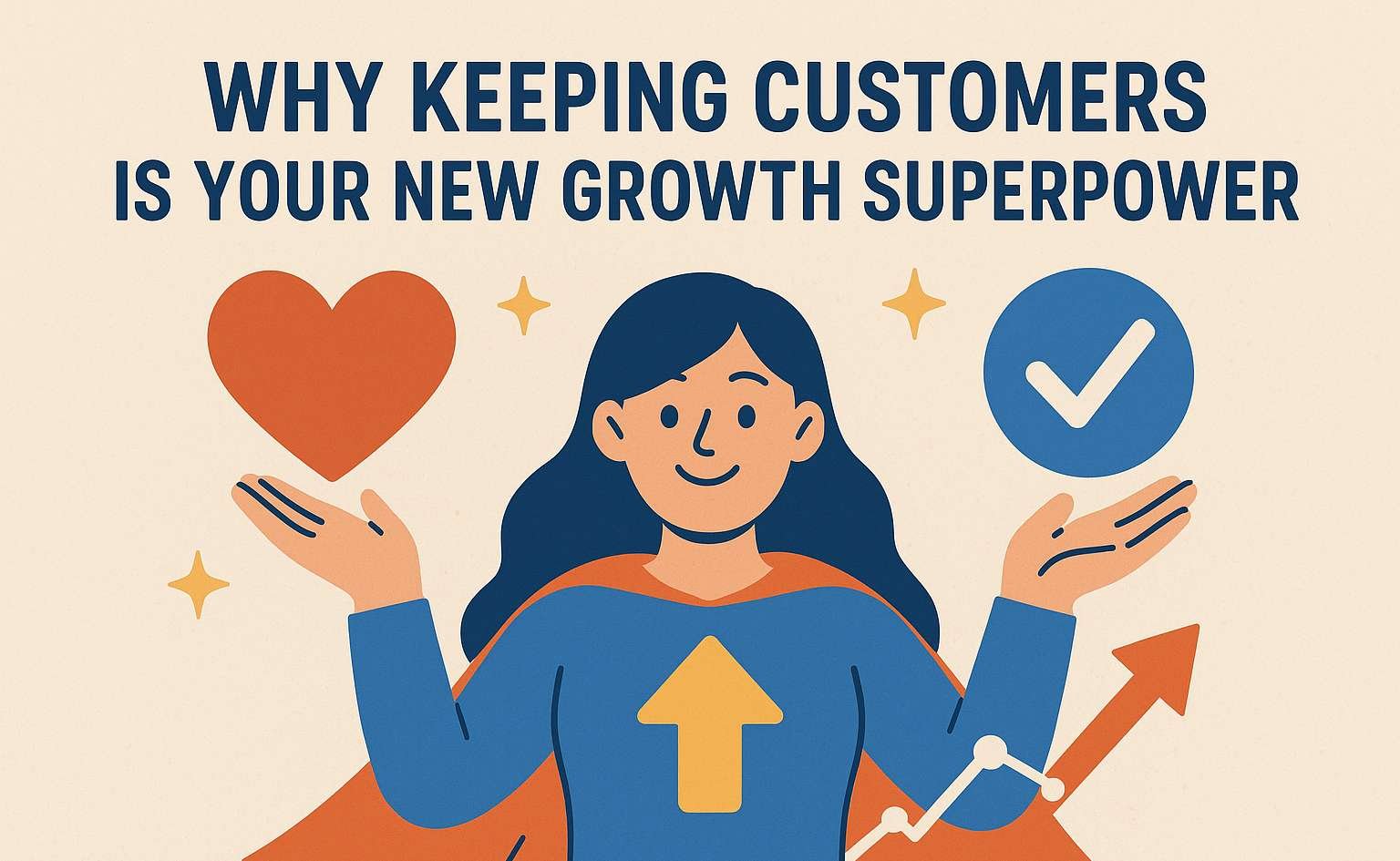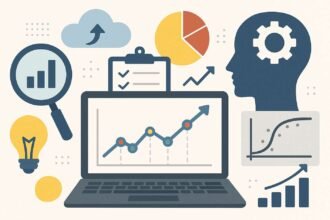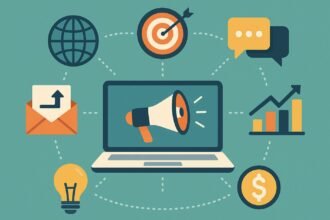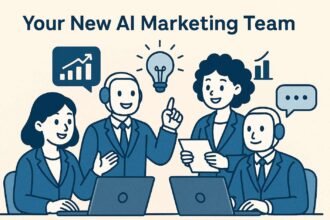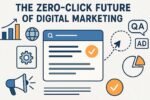Executive Overview
Sustaining growth in competitive markets requires balancing the needs of new customers with the expectations of ongoing customers to maximize the value of customer relationships. Tension arises because high growth often comes with low retention, making growth an ask and retention a tell—risky while scaling and costly to maintain. However, that risk can be managed and the true cost of retention clearly defined. The best news of all is that investment in retention can be justified by its own returns, as compounding revenue from repeated business not only lifts projected returns but also stabilizes the business for healthy long-term growth.
Retention has a special place in the growth equation because it drives compounding revenue and reduces risk. It accounts for most revenue across various product categories and is such a powerful driver of growth that it often goes unmeasured. In light of that power, this section explicitly defines retention, clarifies what retention means for growth, quantifies common retention metrics, and explains the economics behind them—what retention means to owners, investors, and boards. Armed with this understanding, leaders can then explore concrete strategies for operationalizing retention and embedding that thinking in the company culture.
Growth vs. Retention: The Strategic Advantage
A product or service that’s valuable enough for a customer to use more than once is the Holy Grail of modern business. And nothing beats an established customer when it comes to driving revenue in a cost-effective, reliable manner. Stability in a world of uncertainty is one benefit, but inertia breeds more than just repeat business. Satisfied customers will often become powerful advocates, conduits for word-of-mouth and referrals that drive down the cost of acquisition for new customers without needing to spend a dime on promotion. A well-earned reputation helps exponentially in growth efforts while simultaneously decreasing risk around business forecasts and funding requirements.
Conceptually, the trade-off between acquisition and retention is straightforward—the economics of acquisition suggest pouring a lot of capital into initiatives that will not make you money at all for years. Go deep, creating a huge presence in the market. Then shift gears and focus on retention to dig heavily into the remaining customer base for a huge source of compounding revenue. Retention compounding is what separates the business with phenomenal growth rates from the one with decent levels of growth. Compounding revenue makes an incoming CEO’s job easier; compounding revenue allows surprise expansion into unbudgeted areas. The risk is not sustaining a high spend rate.
Defining Customer Lifetime Value (CLV)
When evaluating long-term retention strategies, it’s critical to understand Customer Lifetime Value (CLV)—the total value of a customer relationship. CLV can be calculated by establishing the expected income from a customer’s purchases and then determining how long the person is likely to remain a customer.
CLV incorporates three factors:
1. Total Revenue over the product cycle 2. Average Margin Percentage 3. Retention Rate: The likelihood that a customer will remain, expressed as a decimal. This captures how long the average customer stays.
When the three factors are multiplied together, they indicate a company’s long-term CLV by customer. If the CLV of a specific customer represents more than half of the total cost of customer acquisition, it’s prudent to invest additional marketing funds in retaining the customer.
Understanding Customer Retention
More often than not, when marketers talk about improving “retention,” they focus on increasing the percentage of customers whose accounts remain open over time. In practice, however, retention can mean four things:
1. Customers who actively engage with the business on a regular basis, or use the product frequently enough that it becomes a routine part of their life. 2. Customers who remain sufficiently satisfied to keep returning, even if they take breaks from using or buying the product. 3. Customers who go on to make not just A purchase—but also B, C, D, and E—with the brand. 4. Customers who are not only satisfied trigger their own repeat purchases, but also recommend the product to others.
Marketers measure and track re-engagement and loss in many ways: repeat purchase rates, usage frequency, spend frequency, average order value, recommendation likelihood, cohort health over time, and more, depending on the business model and drivers of growth. Some of these metrics are foundational to a business’s health as well, such as NPS and referral rates. These and the other important retention-related metrics can be grouped into three distinct categories: * Growth Enrollment and Shape: Will the customer base grow smoothly? * Revenue Stability: How predicted is future revenue? * Word of Mouth: What contribution toward low-cost customer acquisition will the customer make?
The results of optimizing in these areas ultimately come together to support a solid foundation for long-term growth.
One of the strongest signals of a healthy growth trajectory for a startup is continual improvement in LTV:CAC over time. A struggling startup will watch the metric decline even as it pours capital into making the ratio more favorable. This underperformance may be due to a customer base that doesn’t recommend the product, so the LTV stays low while the business incurs heavy, lumpy new-acquisition costs, watched closely by investors. Conversely, a startup with a strong offering for a well-defined target market—and the marketing chops to match—will see growth both from a high percentage of word-of-mouth-driven new accounts and from a base that fills out their need set over time.
Higher retention and higher spend frequency lead to business models that are more predictable in revenue and contribute more to low-cost customer acquisition. All of the changes—big and small—marketers make to the customer experience can add up, if tracked properly, to growth on all three dimensions. To reach the point where the business is firing on all three cylinders, however, activity needs to be focused on retention at the right times. Once customers are brought into the fold, marketers can then turn their attention to nurturing growth.
What Retention Really Means for Growth
Customer retention also handles the following strategic needs:
1. The higher the retention rate, the more predictable revenue becomes. A high retention rate usually indicates that existing product-market fit is being sustained. As such, the business environment has stability and predictability, allowing for accurate planning and control of resources and operations.
2. In addition to predictability, a stable or growing revenue base minimizes the risk of cash flow shortfalls, creating greater investment freedom. This is especially important in times of economic upheaval, when large-scale investments in acquisition may be more risky.
3. Customers who repeatedly engage and buy from a business become enthusiasts and evangelists. When old customers refer new ones at much lower cost than a formal marketing program, it increases the likelihood of successful and profitable acquisition.
Common Retention Metrics and Dashboards
Customer retention requires a coherent and specific tracking system to assess progress and the probability of future gains. The primary indicators for monitoring retention success are: 1. Retention/Renewal Rate — the proportion of customers retained after a defined period, e.g., 12 months or customer contract duration. 2. Churn Rate — the percentage of customers not retained, calculated as 1 − retention rate in a given period. 3. Repeat Purchase Rate — calculated as R/(R + N), where R is repeat purchasers and N new purchasers.
Dashboards consolidate these metrics for different segments of the customer base, e.g., by acquisition date (cohorts) or geography; for channels, products, or services; by customer type (high/low LTV); and for groups treated or not treated with particular retention initiatives. Exploration of these metrics and their effects through A/B testing and cohort analysis is addressed separately in “Retention Analytics and Experimentation.” More specific analyses follow in “The Economics of Keeping Customers,” “Cost of Acquisition vs. Cost of Retention,” and “Compounding Revenue Through Repeat Business.” The key narrative connecting all these elements is presented in “What Retention Really Means for Growth.”
The Economics of Keeping Customers
Retention is the key to profitability, and the economics underscore why. Consider a business with $200 in annual revenue from each customer, a 30% margin, and a 9-month average payback period on customer acquisition investment (say, marketing). If unit economic analysis follows without questioning it, the company might assume its churn rate is 10% (doing $1 million yearly revenue, that’s annual cloud loss of $100,751) and therefore spend $5 million on acquisition with a cash-burn runway to cover the payback period—but what if churn were really 30%, the real long-term return on investment ratio 1.5? Given that churn creates an internal compounding effect and loss of customer referrals, reinvesting a chunk of customer acquisition cost into improving retention might pay off dividends.
Cost of Acquisition vs. Cost of Retention
As discussed in the earlier section “The Economics of Keeping Customers,” the economic logic is simple. You lose money on early customer acquisition (again, because markets are not free), and when you finally get to the point of generating positive margins, most customers churn. Thus, you need to ask whether the numbers would look better if those lost customers had stayed, and positive margins had been generated in every month of a customer’s tenure, instead of just some.
The answer is certainly yes for companies with a sufficiently long paying customer life. A more advanced version of this logic compares the unit economics of Customer Lifetime Value and Cost Per Acquisition. When customers tend to stay for a long time, the sum of gross margins created over a customer’s lifetime dwarfs the cost of acquiring a customer, and so pays back in a few months. Yet that isn’t always the case. When such loss rates are high, even when recent users have higher LTV than user cohorts further back in time—thanks to product improvements and a more robust offering—the company may still be vulnerable. The growth rate of a user base is strongly affected by recent user loss rates, as just discussed. Those inherent loss rates therefore figure into the timing on future margins been enough to make operational-centric reinvestment ideas compelling. The business model needs to be properly forecasted from the top down.
Compounding Revenue Through Repeat Business
Revenue is not just a reward for solving problems or fulfilling needs; it is also a means of continued relationship that paves the way for more income. Just as repeat customers provide opportunities for impulse buys, each successful resolution can trigger related purchases and foster a more reliant relationship. This process can occur at various points during the customer journey—engaging in new product discovery, adding usage capacity, or forecasting design upgrades and service growth—and all play a part in compounding revenue. Three core areas—purchase frequency, customer tenure, and interdependent sales—play a role in a brand’s ability to compound revenue through repeat business.
The level of compounding revenue is further explored along three angles: purchase frequency (how often customers buy), customer tenure (how long they buy for), and increased basket sizes (how much more and variety customers buy). These aspects are addressed in the following sections.
Strategies to Improve Retention
Like any marketing initiative, investing in retention requires a menu of options with clear rationale and expected returns. Several strategies have surfaced repeatedly across industries, and success hinges on thoughtful execution and testing. However, active retention management doesn’t end with these tactics; the menu must be revisited and refined as products, customers, and markets evolve.
A retention menu contains five broad appetites: onboarding for smooth initial experiences; customer success for ongoing satisfaction; personalization and customization for tailored relevance; active engagement to drive loyalty; and customer voice to promote continual improvement. Specific strategies in each area are described briefly, with deeper considerations in the Operationalizing Retention section.
Onboarding and Time-to-Value
As discussed earlier, onboarding and reducing the time-to-value of your product is a common retention tactic mentioned in literature. Especially for SaaS businesses that have inherently high retention rates, it makes sense to spend on retention once a customer starts generating value and especially for early-stage businesses that are still building their product.
A smooth onboarding experience greatly reduces early churn, but for more mature businesses the factor can be often ignored. This is because the value delivered during the customer journey, e.g. figuring out the first few aspects of the product and correct way to use it. It’s essential that reducing time to value focuses specifically on reducing churn risk during onboarding. If the risk of onboarding churn is low, efforts should focus on increasing the long-term retention rate, thereby compounding the lifetime value beyond what is possible with retention-focused efforts alone.
Product-Market Fit Reinforcement
Customers’ perception of your product changes over time. Sometimes those changes reinforce their product-market fit (PMF) and deepen their bond with your offering; sometimes they reduce fit, increasing the risk of churn. Regularly assessing those shifts ensures you’re on the right side of the equation.
Product-market fit is transient by nature. As customers’ needs and objectives evolve, signals that once aligned perfectly to communicate value soon drift off course. The risk usually manifests gradually, though not always: a new competitor can disrupt the foundation of your relationship, and “shiny object syndrome” can lead users to lose focus. It’s therefore critical to an organization’s long-term success that product-market fit evolves alongside customers’ needs. Customer success teams play a critical role here, influencing existing customers’ product interactions, satisfaction, and success.
Customer Success and Proactive Support
Proactively supporting customers throughout their life cycle builds long-term loyalty and protects against churn. Strategic support begins with health checks that gauge overall satisfaction and service fitness. Proactive alerts trigger outreach to customers in danger of trouble and empower support teams with context for remediation conversations.
Operating s̶y̶s̶t̶e̶m̶s̶ business c̶r̶i̶t̶i̶c̶a̶l̶ systems attract special attention, particularly with users near their resource capacity, approaching regulatory checks, or facing critical outcomes. Reaching out before the customer realizes they need help is a key goal.
Personalization and Customization
Tailoring the customer journey and promotions boosts conversion and loyalty. Personalization is about providing each customer experience or offer that resonates most with them at the right moment. With modern machine learning algorithms, companies no longer have to resort to one-off, costly, deep-dive customizations tailored to each customer to achieve personalization: a well-orchestrated, automated journey that understands segments within the customer base can resonate far deeper than a generic experience. Successful personalization thus requires richer data storage and intelligent segment definition, making it possible to deliver different yet coherent journeys for different customers – all while keeping marketing expenses under control.
Customization takes personalization further: it provides the customer with greater control over the experience. Customers increasingly want to be involved in narrating their own stories, co-creating the product or experience to meet their needs. Customization solutions add complexity to operations but are increasingly feasible in product-oriented businesses: customer config validators (e.g. checking whether color A is available for a certain size) and SKU rationalization (limiting inventory to only top-selling combinations) often allow customization without inflating inventory costs. For services, greater customer control can be delivered through gamification or user-generated content – but these need to be thoughtfully managed to avoid dilution of the product experience and customer brand dilution.
Engagement and Loyalty
Ongoing engagement with customers—attention to their needs and sentiments—strengthens both retention and loyalty. Loyal customers spend more, more frequently, and for longer, yet loyalty isn’t simply a function of time or tenure. It’s built on a product experience that truly engages customers, creating a loop of ongoing interactions, satisfaction, and value. Furthermore, engaged customers are your best salesforce: they return without needing a pitch, recommend your product to friends, and defend your brand when things go wrong.
Designing for engagement and loyalty can feel overwhelming because of the millions of customers and countless paths through the business. But while every customer journey is unique, trips through segments are more predictable. Kotler’s concept of the “customer buying decision” emphasizes the stages of problem recognition, information search, evaluation, purchase, and post-purchase evaluation. An effective approach is to design for an engaged journey while segmenting key moments for personalized messages. Critical stages in the activation, growth, and retention phases can be aligned with specific communication cadence, offers, and channels.
Lifecycle Communication and Nurture Campaigns
Growth and retention strategies often share their tactical underpinnings: re-engaging dormant customers via win-back campaigns deploys the exact same mechanics as nurturing new relationships post-attraction. But these scenarios differ fundamentally in objective and measure. Growth campaigns signal activation and acceleration toward outcome-based objectives. Retention initiatives aim to avert premature cessation or disengagement of customers that are either still on the journey or already enjoying outcomes.
The contact cadence and marketing channels vary considerably across these stages of the customer lifecycle. Customers in the attraction stage, for example, typically receive relatively high levels of communication as they move toward conversion; follow-up messaging continues during onboarding, guiding customers toward securing initial product outcomes. An onboarding nurture plan also protects against premature failure by optimizing the activation time-to-value. Once successful activation occurs, the customer moves into a stage of relationship growth and expansion toward ever-larger outcomes. At this point, communication with the customer naturally shifts to prioritizing frequency and impact over volume. Finally, as the customer matures and outcomes stabilize and normalize, the messaging cadence reduces, focusing instead on preserving relationships over the longer term through seasonal marketing activity, rewards, and other loyalty-oriented communication.
Loyalty Programs and Referral Loops
Loyalty programs and referral incentives can attract repeat purchases and word-of-mouth customers, amplifying growth through these low-cost channels. Reward programs provide incremental motivation for further purchases by customers already engaged with the brand. Referral loops entice customers to help acquire their first word-of-mouth referral. Loyalty programs attract additional purchases at a lower average selling price, while referral programs, when structured correctly, pull in customers at a negligible acquisition cost.
These programs can be a key part of retention-oriented customer lifecycle marketing that activates customers, drives growth from existing consumers, and nurtures them to keep top-of-mind over the course of their product journey. Designing loyalty and referral programs that profitably attract incremental activity requires understanding the economics behind each tactic—not simply the per-transaction costs of discounting or granting offers.
Voice of the Customer
The voice of the customer describes how customers express their impressions, evaluations, and feelings about the products and services they use. Continuous feedback helps companies understand customer utilization and satisfaction, which fuels product development, support, and processes.
Processes to capture customer perspectives are varied. Customer satisfaction surveys assess how well a given experience met expectations. Net promoter score (NPS) surveys address loyalty and the likelihood of recommending the brand to others. Customer effort score (CES) measures the perceived difficulty of an interaction, with lower effort correlating to higher satisfaction. Qualitative interviews delve into customer perspectives at specific moments to reveal deeper insights. User-experience analyses examine patterns of usage data.
Collecting and Analyzing Feedback
Collecting customer feedback is crucial to understand their needs and the drivers behind their satisfaction and loyalty. Surveys, interviews, online reviews, direct customer communication, support tickets, and product usage data—each provides valuable customer insight when designed correctly, constructed thoughtfully, and administered with the right timing, segmentation, and methodology. Survey mechanics vary based on objectives. For experience measures like Net Promoter Score (NPS) or Customer Effort Score (CES), operationalize carefully to achieve response rates above 30% and minimize bias from timing, sampling, language, and instruction. For deeper customer voice, use qualitative interviews instead.
Despite their importance, survey data are often misused or ignored. Low or declining scores can appear out of context; results may be pathological; feedback may contradict, remain unreflected upon, and prompt no action. Ensure dedicated resources to collect, maintain, interpret, and act on such data. Curation demands discipline and hygiene; the secret weapon lies in thoughtful implementation and use. Address multiple customer needs—product, support, operations—using diverse valid feedback streams—NPS, CES, qualitative customer voice interviews—and conduct periodic personalized analysis to preserve decision-making quality without overloading teams. A structured collecting-and-acting rhythm bolsters engagement and long-term performance.
Closing the Feedback Loop with Action
Insights from voice-of-the-customer programs should flow back into product, support, and operational processes. Change is the only way to demonstrate that the time, effort, and intimacy your company invested in gathering customer feedback had purpose and produce progress toward your customers’ goals.
That means product teams continuously evolving the offering; customer support proactively addressing known pain points; operations delivering on commitments and resolving nagging inconveniences; marketing aligning communications and promotions with customer realities; and sales tackling objections that have been clearly echoed by customers. This fluidity is the “closed loop” aspect of voice-of-the-customer engagement—because companies close the loop by taking action.
Retention Analytics and Experimentation
Every retention improvement initiative can be treated as an experiment. Start with a hypothesis that explains retention-related behavior, use a chosen method—like NPS—to identify the cohort, create a control group, and establish the expected outcome, whether in a single metric or a combination. Hypothesize how targeted action and remediation will improve desired retention metrics for the selected groups and focus on key behaviors that have driven or inhibited retention success.
Retention analytics are concerned not only with the macro view of cohort retention expressed through a retention curve but also with more granular examination of other behavior-based metrics. For example: Do activated customers stay engaged? Do advocates hit a tipping point that creates an exponential word-of-mouth growth effect? Are latents at risk of becoming negatives? Do negatives churn or convert into cores? Cohorts created through these different perspectives help identify the relationship between each group’s lifecycle behavior and retention trends. This analysis will also provide an early warning system that detects whether new program launches and lifecycle transitions create the expected positive impact.
A/B Testing for Retention Improvements
Retention-focused experiments follow the classic A/B testing paradigm. Hypotheses propose how specific changes will influence retention. A representative audience is randomly divided into control and experimental groups. Their responses determine initiative success.
Retention metrics—customer churn, cohort purchase behavior, repeat purchase rates, Customer Lifetime Value (CLV), and others—provide the crucial pass/fail criteria. CHURN.TREND operations define Churn and its rate, facilitating testing for cohorts offset by retention actions. The entire customer base is included as product experiences change. Testing proportions address risk in value proposition shifts, while cadence controls frequency for programs designed to sustain and build interest over time.
Cohort Analysis and Trends
Segmentation by cohort reveals lifecycle patterns and long-term retention drivers. Tracking cohorts against aggregate retention rates uncovers trends that flag future churn risk and highlight options for proactive mitigation.
Retention curves typically flatten as cohorts mature, yet retention rates often behave like sine waves. This pattern arises when user engagement ebbs and flows, commonly in seasonal businesses. Unusual fluctuations may indicate potential churn dysfunction, guiding focus on critical cohorts. Two questions help sense-check cohort analysis: When seeking growth, do incumbents display higher retention rates than new customers? When seeking risk signals, do cohorts increasingly deviate from the overall trajectory?
Operationalizing Retention
Retention thinking is best operationalized by integrating customer success goals, capabilities, and analyses into broader product and marketing strategies. Ultimately, your customers’ desire—and therefore willingness—to renew or repurchase your product or service should be a primary consideration for every stage of the customer lifecycle.
Embedding retention in a company’s DNA typically requires cross-functional alignment—especially between product, marketing, and customer success. Start by defining a governance framework for retention decisions that includes representatives from each of these teams. A shared retention metric, plus decision rights organized by lifecycle stage, will help keep retention on everyone’s radar screen. Concerns over churn or neglecting existing customers also inform the prioritization of new capabilities and functions, such as enhancing the product roadmap with customer-requested features.
Cross-Functional Alignment
Embedding retention thinking in product, marketing, and customer success practices requires clear governance, unified metrics, and shared decision rights across teams. Retention initiatives must be operationalized cross-functionally to sustain focus on the long-term customer relationship, especially in growth-focused organizations. Without such investment, ownership becomes diffused and commitment to long-term customer retention wavers.
Governance addressing retention must include regular executives meetings to review and provide resource allocation guidance for retention strategies. Key stakeholders or a dedicated team should communicate overarching retention goals, messages, and budgeted initiatives to support ongoing investment. Each function should maintain a dashboard, informed by retention-focused cohort analysis that highlights both emerging and potential churn triggers as well as success/failure signals related to retention initiatives. From these inputs, a designated governance group has the authority to decide on major changes or proposals involving trade-offs between retention, growth, innovation, and delivery quality.
Retention-Focused KPIs and Incentives
Metrics like retention rate, churn rate, repeat purchase rate, and LTV:CAC should guide actions across the organization, and the incentive system should align teams with their retention goals. Incentives should strike a balance between the individual driver of customer retention and the collective nature of delivering long-term value to customers. KPIs must carefully navigate gains versus losses: while a decline in these retention-oriented metrics often signals a scramble for customer recovery, substantial progress against these needs requires deeper, longer-term changes.
Retaining customers and keeping them happy, engaged, and loyal over time requires commitment across the product, marketing, and customer-facing teams. Closing the feedback loop, understanding the voice of the customer, embedding retention thinking into analytics and experimentation, properly calibrating cross-functional alignment, and establishing appropriate KPIs and incentive structures within teams all play supporting roles. Detailing the key tactics and strategies for better retention, combined in a handy checklist, is indispensable. Deliberate work on onboarding, delivering time-to-value quickly, reinforcing product-market fit, melding product evolution to customer needs, and proactive customer success are all sources of retention dividends that require special focus.
Risks and Challenges
Retention poses risks as well. Focusing exclusively on keeping customers can create a vulnerable business model: failing to innovate and develop the product or service to meet changing needs gives customers a reason to leave, or worse, encourages them to invest in an alternative solution. Attention to retention should keep one finger on the pulse of churn triggers, a proactive reduction posture in place, and playbooks for common churn symptoms or vectors such as a lack of product usage, service quality issues, or internal budget cuts. The risk of become too inward-looking can be alleviated either by governance structures such as a Growth Council that includes leaders from customer-facing teams (sales, marketing, support) or by innovation cycles that prioritize rapid experimentation and learning.
Customer churn can be a major challenge for newly established and growth-driven companies in the scale-up phase. Too much effort goes into acquiring new customers instead of engaging with customers to implement activation and growth strategies. Ignoring customer requests and complaints—or failing to reach out before product and service issues escalate—risks overwhelming customers, leading them to feel neglected, frustrated, or that their business is no longer valued. Overly aggressive sales tactics can deteriorate trust or result in a poor product–market fit for customers, making it statistically impossible for success despite valiant efforts.
Churn Triggers and Mitigation
Companies face several churn triggers, including product substitutes, better alternatives, shifts in user needs, pricing, and service problems. Certain early-warning signs, such as reduced engagement, complaints, and negative feedback, call for immediate mitigation efforts, overseen by predefined playbooks.
Product-driven churn occurs when customers find substitutes elsewhere. Increasing competition naturally makes more options available, both good and bad. It’s also possible to lose customers to alternatives that are less relevant in the long run, such as trendy-but-temporary consumer goods, or faddish digital tools that have a short life cycle. Either case raises the question of how your offering can be made better than the alternatives.
Another risk is switching in search of a better product. This trend tends to build gradually, reflecting likely changes in technology, pricing, or quality relative to competitors. The key to preparing for it is to stay aware of customer sentiment. Ongoing feedback collection is critical to detect this sort of risk. Net Promoter Score (NPS) surveys can be particularly helpful in this regard, assuming that customers may have evaluated competing offerings. Support interactions are equally important and should be culled regularly for signs of dissatisfaction.
Balance Between Retention and Innovation
When a company becomes known for great customer retention, significant interest comes from both analysts and peers. Retention virtually ensures stability and predictability in revenues and profits, often reducing risk and volatility for investors and other stakeholders. Yet despite its critical importance, operationalizing it is challenging. It relies on the intersection of product, customer, marketing, and engineering teams. Furthermore, retained customers generally provide only a fraction of the growth required to meet shareholder expectations, introducing tension with product teams eager to innovate, add features, cultivate sessions, and enhance the product experience. Governance needs to sustain the momentum behind retention without adversely impacting growth.
Retention is a key driver in the growth equation: the faster and stronger growth can unfold, the better. Innovation is vital for attracting new customers, especially when retention is high. Feature improvements keep the brand fresh and relevant, support seasonality and trends, and ensure that the product continues to grow with customers. Well-structured organizations—those that sustain retention momentum while ensuring their product roadmaps don’t go stale—are the ones that truly balance the two.
Conclusion
Strong retention has long been a mantra in subscription businesses. And for good reason—repeat purchases are the fastest, cheapest source of growth for web-based service companies. But focus on retention is useful for any business. It drives up customer lifetime value, reduces risk, and leads to more satisfying and reliable revenue streams. And it doesn’t require its own team or budget. In fact, the best retention strategies are simply a different set of priorities for marketing, product, sales, and customer support. Compounding revenue through repeat business is not just a feel-good idea. It’s how a good business becomes a great one.
Retention is complicated because it means different things to different functions. For an e-commerce company, retention can mean repeat purchases. For a social network, it means declining churn and a growing user base. For a software-as-a-service company, customer engagement is a more accurate measure of retention. And for businesses like airlines, hotels, and credit cards, the relevant retention metric is the number of referrals or the size of the customer’s next transaction—something loyalty programs cleverly exploit. But no matter how retention is defined, it counts. Strong retention reduces risk and volatility, which means investors value companies more highly. Retention smooths revenue streams and enhances the impact of customer recommendation. It even reduces the cost of sales and marketing.


